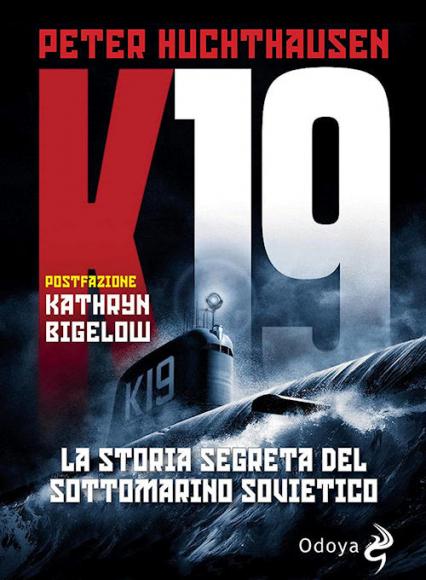Peter Huchthausen
Ed.Odoya, Città di Castello (PG) 2021
Pages 203
Starting from the memoirs of first rank captain Nikolay Zateev, who commanded the K-19, the first Soviet nuclear submarine equipped with ballistic missiles, the author, an officer of the United States Navy, makes us understand that the accident of the Kursk submarine , which occurred on August 12, 2000 and where 118 crew members died, was the latest in a series of disasters hidden for many years by Soviet and Russian censors.
It was Stalin, immediately after the war, who gave a strong impetus to the development of the naval fleet, so that the Soviet Union could have a navy commensurate with its new superpower status. In those years, “The Soviet Union built more warships than all the other nations of the world combined. Between 1948 and 1950 alone, the Soviets produced fifty to sixty submarines a year […]. The massive naval impulse, however, did not last long and came to an end with Stalin's death in 1953."
The explosion of the flagship of the Black Sea Fleet, the Novorossysk, which occurred on 20 October 1955 in the port of Sevastopol and which caused the death of 608 sailors, put an end to the mandate of the commander-in-chief of the navy, Admiral Kuznetsov and inaugurated the era of Admiral Gorškov, father of the modern Soviet navy and wanted by Cruščëv, who “He oversaw a massive revolution in naval doctrine and the construction of a fleet of missile-launching surface ships and nuclear-powered submarines.” Khrushchev, in fact, bet on “a defensive strategy based on a solid submarine force and a surface fleet limited to coastal defense.”
In 1958 the United States had its first nuclear submarine, the USS Nautilus, to which the Soviets responded with their first nuclear-powered guided missile submarine, the K-19, whose first commander was Nikolai Zateev. Throughout the Cold War, Soviet ships were sent to sea with very little attention to the living and safety conditions of the crew, as “Nuclear engineering research took place with little or no quality control, while construction site safety was minimal. Personal advancement was based on meeting production quotas.”
There was a constant effort on the Soviet side to put itself on the same level as the West, which caused numerous errors which were the basis of many serious accidents. “There are still huge gaps in the known history of the Soviet Navy, especially regarding the submarine force. In these voids are found not only design and command errors, but also numerous accounts of courage and acts of extraordinary heroism displayed by sailors as ships exploded, burned, and sank. Until the beginning of the Gorbachev era, in the late XNUMXs, all serious naval accidents were kept secret by order of the Supreme Soviet."
With the advent of nuclear power it was very difficult to find qualified officers and experienced crew members, so they resorted “to a hasty training of young engineering officers, who entered the atomic program with minimal experience on board submarines.”
On July 4, 1961, the nuclear accident occurred on board the K-19, one of the worst events in the history of the sea. During a demonstration exercise, which was intended to celebrate the superiority of Soviet atomic submarines, a pipe broke in the primary cooling circuit of reactor one. “Heroic measures were taken. The brave sailors exposed themselves to unprecedented levels of lethal radiation. And the lives of those on board would have been affected forever." Eight died and, subsequently, thirteen other crew members died. “The authorities had good reason to forbid telling the submariners why the accident had occurred and why it had had such devastating effects: there were no safety procedures relating to the reactor in case of failure or rupture of the seal in the circuit cooling, and the responsibility lay with the chief designer".
The K-19 accident was not the only accident, as from 1958 to 1968 the Soviet navy lost more than seven submarines and 200 men. “Victims of severe radiation damage were often disappeared into isolated hospital wards, where the symptoms were passed off as nervous disorders. […] The Supreme Soviet, […] made it illegal for health authorities to write radiation poisoning as the cause of death on official certificates.”
The K-19, victim of other accidents of various types, was decommissioned in 1991. Its first commander, Zateev, haunted for the rest of his life by the pain caused by the deaths of his crew, “tried to use the knowledge gained from the K-19 experience to help remedy many problems.”
Gianlorenzo Capano












